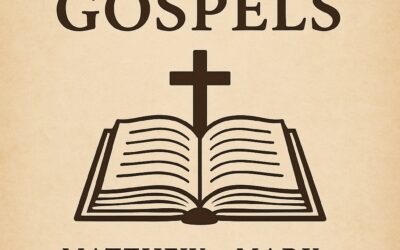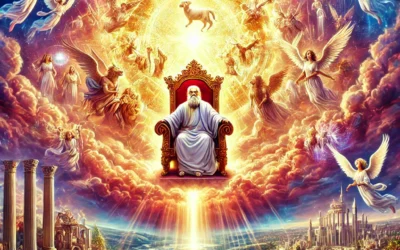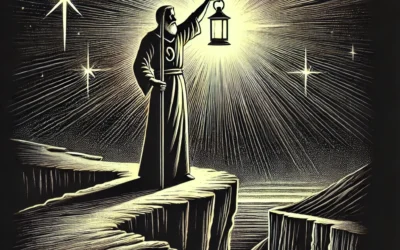The Book of John is the fourth book of the New Testament and the last of the four Gospels.
Written by the apostle John, this Gospel offers a unique and deeply theological account of Jesus’ life and ministry.
Unlike the Synoptic Gospels (Matthew, Mark, and Luke), John focuses less on chronological events and more on the identity of Jesus as the eternal Son of God.
Through seven signs and seven “I Am” statements, John reveals Jesus’ divinity and His mission to bring eternal life to those who believe.
The Word Became Flesh (John 1)
John opens with a powerful introduction, presenting Jesus as the eternal Word who existed before creation and who came into the world to bring light and life.
Key Highlights:
- “In the beginning was the Word, and the Word was with God, and the Word was God”
- Jesus is the true Light, rejected by many but received by some
- The Word became flesh and dwelt among us
- John the Baptist testifies that Jesus is the Lamb of God
Lesson: Jesus is not just a teacher or prophet—He is God in human form, sent to reveal the Father and bring salvation.
Early Ministry and First Signs (John 2–4)
Jesus begins His public ministry, performing miracles that reveal His glory and engaging personally with individuals seeking truth.
Key Highlights:
- Turns water into wine at a wedding in Cana—His first public miracle
- Clears the temple, showing His authority over worship
- Meets with Nicodemus and speaks about being born again
- Gives the famous words: “For God so loved the world…” (John 3:16)
- Speaks with the Samaritan woman at the well, offering living water
Lesson: Jesus meets people where they are—with truth, love, and the power to transform their lives.
Signs and Teaching in Galilee and Judea (John 5–10)
Jesus performs more miraculous signs and begins teaching more openly about His identity, often resulting in division and growing opposition.
Key Highlights:
- Heals a lame man at the pool of Bethesda
- Feeds 5,000 and walks on water
- Declares, “I am the Bread of Life” and “I am the Light of the World”
- Heals a man born blind, revealing spiritual sight and blindness
- Describes Himself as the Good Shepherd who lays down His life
Lesson: Jesus not only performs miracles but explains what they mean—He is the source of life, light, truth, and salvation.
The Raising of Lazarus and Growing Opposition (John 11–12)
Jesus performs His most dramatic sign, raising Lazarus from the dead, which accelerates both belief and resistance.
Key Highlights:
- Lazarus dies, and Jesus intentionally delays visiting
- Jesus weeps and then raises Lazarus from the tomb
- Declares, “I am the resurrection and the life”
- The miracle leads many to believe—but others plot to kill Him
- Enters Jerusalem to shouts of “Hosanna!” before the Passover
Lesson: Jesus has power over life and death, and His mission leads directly to the cross.
The Upper Room and Farewell Teachings (John 13–17)
On the night before His crucifixion, Jesus shares a final meal with His disciples and prepares them for what is to come.
Key Highlights:
- Washes His disciples’ feet, modelling servant leadership
- Gives a new commandment: “Love one another”
- Promises the coming of the Holy Spirit (the Helper)
- Declares, “I am the way, the truth, and the life”
- Prays for His followers in what is known as the High Priestly Prayer
Lesson: Jesus prepares His disciples not just for His death but for a life of love, unity, and mission empowered by the Spirit.
The Crucifixion and Resurrection (John 18–21)
John recounts the arrest, trial, death, and resurrection of Jesus with a focus on His authority and fulfilment of prophecy.
Key Highlights:
- Jesus is betrayed by Judas and arrested in the garden
- Tried before Pilate and declared “King of the Jews”
- Is crucified and declares, “It is finished” before He dies
- Buried by Joseph of Arimathea; the tomb is found empty
- Appears to Mary Magdalene, the disciples, and Thomas
- Restores Peter and commissions him to “feed my sheep”
Lesson: Jesus’ death was not defeat but victory, and His resurrection is the foundation of faith and forgiveness.
Themes of John
- Jesus as the Son of God – Fully divine, fully human, the perfect revelation of the Father
- Belief and Eternal Life – The purpose of the Gospel is that we might believe and have life in His name
- Personal Encounters – From Nicodemus to Mary Magdalene, Jesus changes lives one heart at a time
- The Seven Signs – Each miracle reveals a deeper truth about who Jesus is
- The “I Am” Statements – Jesus reveals His divine identity in phrases like “I am the Good Shepherd” and “I am the Resurrection and the Life”
Final Thoughts
The Book of John is a deeply personal and theological Gospel that invites us to see Jesus not only as a miracle worker but as God in the flesh—the One who offers eternal life to all who believe.
It is a Gospel of intimacy, truth, and transformation.
As John writes near the end of the book: “These are written that you may believe that Jesus is the Christ, the Son of God, and that by believing you may have life in His name.”





